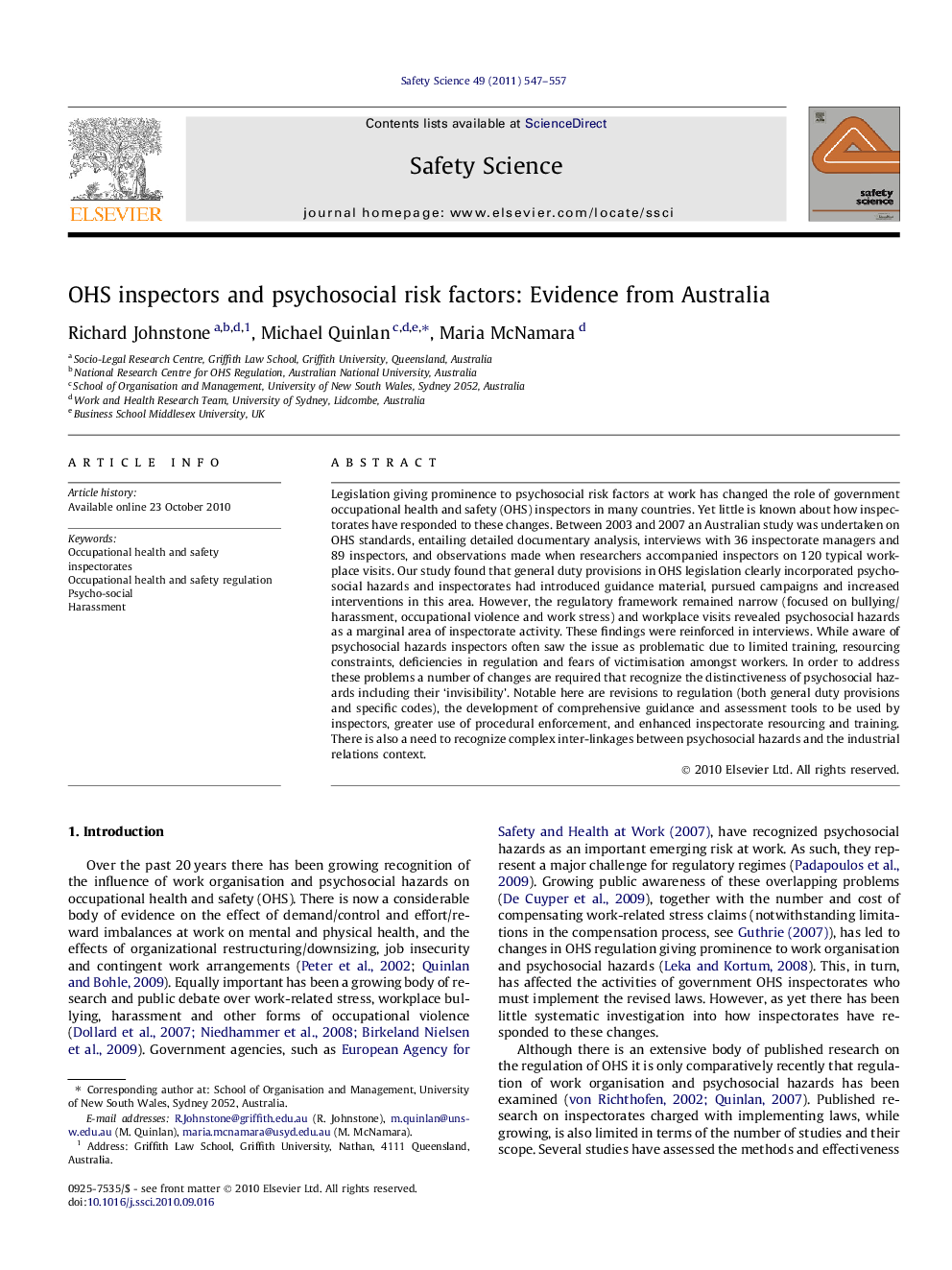| Article ID | Journal | Published Year | Pages | File Type |
|---|---|---|---|---|
| 590041 | Safety Science | 2011 | 11 Pages |
Legislation giving prominence to psychosocial risk factors at work has changed the role of government occupational health and safety (OHS) inspectors in many countries. Yet little is known about how inspectorates have responded to these changes. Between 2003 and 2007 an Australian study was undertaken on OHS standards, entailing detailed documentary analysis, interviews with 36 inspectorate managers and 89 inspectors, and observations made when researchers accompanied inspectors on 120 typical workplace visits. Our study found that general duty provisions in OHS legislation clearly incorporated psychosocial hazards and inspectorates had introduced guidance material, pursued campaigns and increased interventions in this area. However, the regulatory framework remained narrow (focused on bullying/harassment, occupational violence and work stress) and workplace visits revealed psychosocial hazards as a marginal area of inspectorate activity. These findings were reinforced in interviews. While aware of psychosocial hazards inspectors often saw the issue as problematic due to limited training, resourcing constraints, deficiencies in regulation and fears of victimisation amongst workers. In order to address these problems a number of changes are required that recognize the distinctiveness of psychosocial hazards including their ‘invisibility’. Notable here are revisions to regulation (both general duty provisions and specific codes), the development of comprehensive guidance and assessment tools to be used by inspectors, greater use of procedural enforcement, and enhanced inspectorate resourcing and training. There is also a need to recognize complex inter-linkages between psychosocial hazards and the industrial relations context.
Research highlights► Examines how inspectors address psychosocial hazards in Australia. ► Inspection of psychosocial hazards is growing but still marginal area of inspectorate activity. ► Identifies enforcement problems including narrow regulatory framework, training/mentoring and resource limitations. ► Proposes policy improvements including greater use of procedural enforcement.
